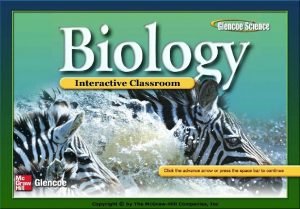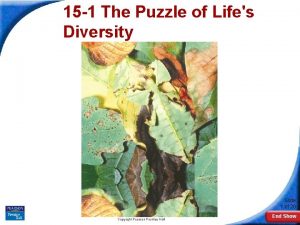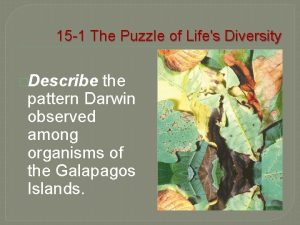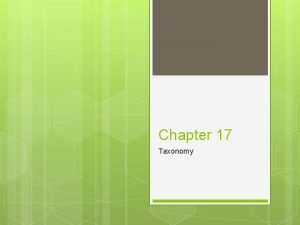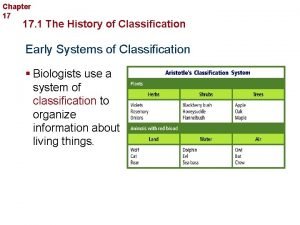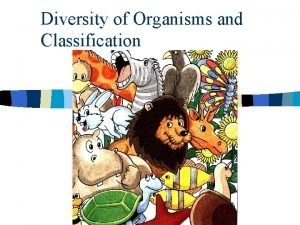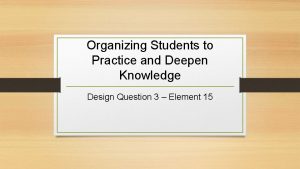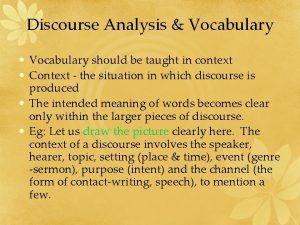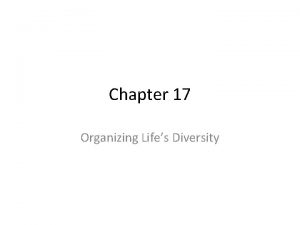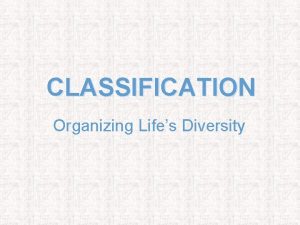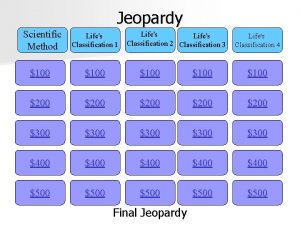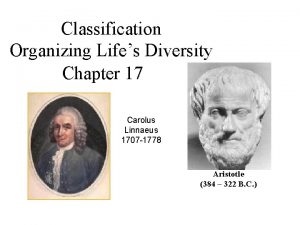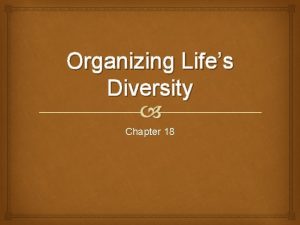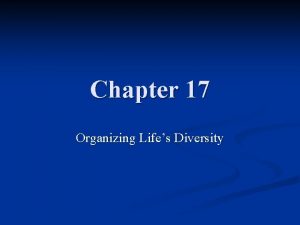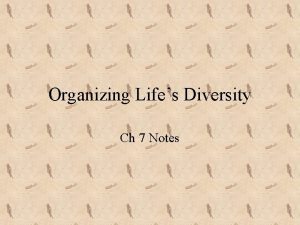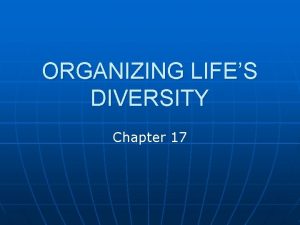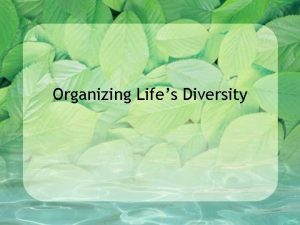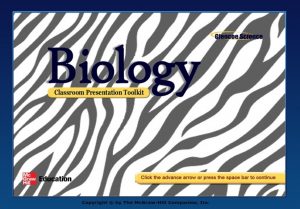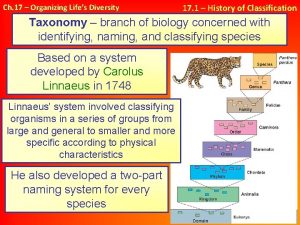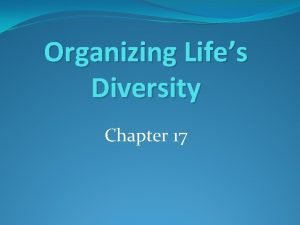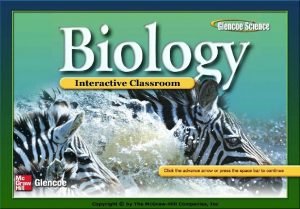Classification Exploring and Organizing Lifes Diversity History of

















- Slides: 17

Classification: Exploring and Organizing Life’s Diversity

History of Classification • Aristotle (384 -322 B. C. ) developed the “first” system Based on how an organism looks Plants and animals Plants were divided into herbs, shrubs and trees Animals were divided based on physical characteristics System was flawed Bats were considered birds because they had wings Whales were considered fish because they had fins Fungi were considered plants Bacteria and other microorganisms were not included Didn’t know they existed

Carolus Linnaeus • Born Carl von Linné (1707 -1778) • Developed a system Called taxonomy based on physical similarities • Developed a system for naming organisms that is still used today Called binomial nomenclature 2 -word naming system using Latin words The first word is the genus (closely related species) The second word is the specific epithet.

Rules for Scientific Names 1. 1 st word is capitalized 2. 2 nd word is lowercase 3. Both words are italicized (if typed) or underlined (if handwritten) • Examples: Homo sapiens Canis familiaris Pinus virginiana Yersinia pestis

What is wrong with these names? • Homo Sapiens • homo sapiens • Homo sapiens

Advantages of Binomial Nomenclature • It is universal The same scientific names are used everywhere on Earth • The scientific name tells you about the organism Where it is found, what it does, who discovered it, or identifying characteristics • It shows relationships Organisms of the same genus will have the same first word

Taxonomy • Science of naming and classifying organisms • 8 Levels Domain Kingdom Phylum Class Order Family Genus Species Did King Philip Come Over For Great Spaghetti? • Domain is the least specific (most different organisms grouped) • Species is the most specific (only one type of organism)


For Us (Guaranteed Test Question ) • Domain: Eukarya • Kingdom: Animalia • Phylum: Chordata • Class: Mammalia • Order: Primata • Family: Hominidae • Genus: Homo • Species: sapiens • Everyone alive can make perfectly healthy, hearty soup

Domains and Kingdoms • There are 3 Domains and 6 Kingdoms of life Domains Bacteria Archaea Eukarya Kingdoms in each domain Domain: Bacteria Kingdom: Bacteria Domain: Archaea Kingdom: Archaea Domain: Eukarya Kingdoms: Protista. Fungi, Plantae, Animalia

Characteristics of Living Things • In order to be alive, something needs to do all of the following: 1. Be made up of one or more cells, containing DNA 2. Obtain and use energy 3. Grow and develop Growth=get bigger Develop=changes throughout life 4. Reproduce 5. Respond to the environment • If something lacks even one of these things, it is not living

Viruses • Viruses are NOT living things They lack most of the characteristics of living things They do not grow and develop They can only reproduce using other organism’s cells They can not obtain or use energy They are not made of cells They do, however, affect living things greatly Can be pathogenic Cause disease (cold and flu) VIRAL DISEASES CANNOT BE TREATED WITH ANTIBIOTICS

Prions • Prions are infectious proteins (Also not living things) Found in air, and cause host’s proteins to fold improperly Causes diseases such as Mad Cow Disease (Bovine Spongiform Encephalopathy) and Creutzfeldt-Jakob Disease (human form) Causes misshapen proteins in the brain Brain develops holes and resembles a sponge Prion diseases are nearly always fatal, as the body has no way to fight them https: //www. youtube. com/watch? v=a. P-Shyy. Hi. Ic https: //www. youtube. com/watch? v=l. S 9 j. KVM 7 ZXo

Types of cells • There are 2 cell Prokaryotic types Lack a nucleus and other organelles Only organelles they have are ribosomes Both Domain Bacteria and Domain Archaea Eukaryotic Have a nucleus and organelles Only Domain=Eukarya

Cladistics • More recent attempt to group Earth’s biodiversity Groups organisms based on Evolutionary relationships Separates organisms based on derived characteristics • Much more accurate and insightful Shows real relationships, not perceived ones • Recently, based more upon DNA than characteristics

Cladogram

Dichotomous Keys • A tool used to identify an organism • Consists of a series of dichotomous statements (2 differing statements)
 Organizing lifes diversity
Organizing lifes diversity Section 15-1 the puzzle of life's diversity
Section 15-1 the puzzle of life's diversity Section 15-1 the puzzle of lifes diversity
Section 15-1 the puzzle of lifes diversity Circle lifes
Circle lifes 4 lifes
4 lifes Counting blessings song
Counting blessings song Organizing life's diversity
Organizing life's diversity Chapter 17 organizing life's diversity
Chapter 17 organizing life's diversity Genetic diversity vs species diversity
Genetic diversity vs species diversity Ecosystem jigsaw activity
Ecosystem jigsaw activity Exploring world history
Exploring world history The smallest grouping that can interbreed.
The smallest grouping that can interbreed. Planning, organizing, staffing, directing and controlling
Planning, organizing, staffing, directing and controlling Planning directing controlling
Planning directing controlling Marzano element 15
Marzano element 15 English paragraph
English paragraph Planning organizing leading and controlling
Planning organizing leading and controlling Discourse analysis and vocabulary
Discourse analysis and vocabulary
